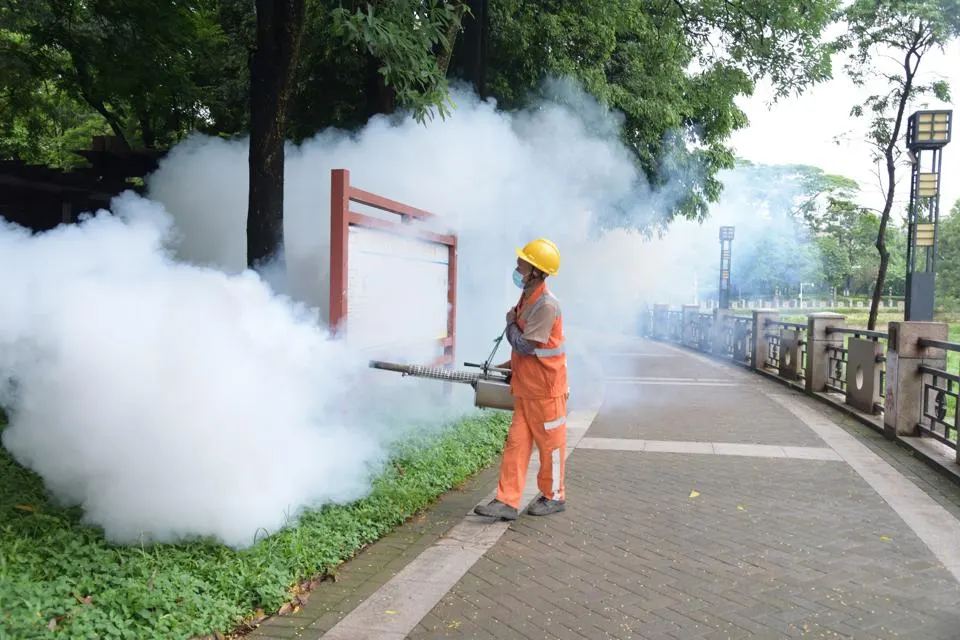Chikungunya Spreads in Southern China

To prevent the spread of the disease, health officials are using disinfectants, mosquito traps, drones, fines, and even biological control. The government is trying not to spread it further and not repeat earlier healthcare disasters.
What Is Chikungunya?
Chikungunya is an Aedes virus spread by Aedes mosquitoes, the same virus that spreads dengue and Zika. It causes fever, rash, joint ache, and muscle ache. For most, the ache lasts weeks or months.
The children, the elderly, and patients with chronic diseases are at greatest risk. There is no short-term cure for the virus; therefore, early prevention and treatment.
Outbreak Centered in Foshan
Foshan is the epicenter of the majority of cases, which is an industrial city. The nearby cities of Guangzhou, Dongguan, and Shenzhen are also reporting new cases. Even Hong Kong had one imported case.
Infected patients are being quarantined for seven days by local hospitals. Each bed in the hospital is draped with mosquito nets to stop further transmission.
Earlier, authorities tested a two-week home quarantine but exempted the rule since chikungunya is not transmitted from human to human.
China’s Strict and Swift Response
Workers are fogging disinfectants on streets, buildings, parks, and construction areas. Mosquito fogging begins even before office tower workers report for duty. The reaction is similar to the severe COVID-19 measures in previous years.
The government is urging residents to dispose of standing water. Bottles, flower pots, and buckets must be drained daily. Otherwise, citizens will be fined as much as 10,000 yuan (about $1,400). Electricity is cut off in case of noncompliance in certain areas.
They have also released larva-consuming fish into community ponds. The fish kill the eggs of mosquitoes prior to hatching. Other districts also release “elephant mosquitoes,” larger versions that consume other mosquitoes but not humans.
Drones now fly over fields and rooftops to spot hidden breeding sites.
Why the Outbreak Got Worse
Heavy rains and high heat triggered the surge. In June and July, southern China saw record rainfall. Flooding left behind countless pools of stagnant water — perfect for mosquito eggs.
Guangdong’s urban areas suffered the most. Streets flooded, sewers overflowed, and many homes lost electricity. These conditions made it easy for mosquitoes to breed.
Weather experts expect more storms and typhoons this August, which may worsen the crisis.
Global Concerns and Travel Warnings
The United States CDC issued a Level 2 travel warning for Guangdong. Travelers should take precautions like wearing long sleeves and using insect repellent. Other countries like Bolivia, Brazil, and several Indian Ocean islands face similar outbreaks this year.
So far, over 240,000 global cases have been reported in 2025. At least 90 people have died from complications linked to chikungunya.
Economic and Social Impact
The outbreak hit Guangdong’s economy hard. Many factories in Foshan and Dongguan reduced output or shifted to remote work. Transportation also slowed due to flooding and staff illness.
To help affected areas, the government released 1 billion yuan in emergency funds. National health agencies met to plan further steps and control the spread.
How People Can Protect Themselves
Health officials urge everyone to:
- Clear standing water daily from containers.
- Use mosquito repellent at home and outdoors.
- Sleep under mosquito nets, especially at night.
- See a doctor if symptoms like fever or joint pain appear.
While there is no vaccine for chikungunya yet, early treatment can ease symptoms. Prevention is still the most effective defense.
What’s Next?
The government hopes to stop the outbreak before it spreads to other provinces. International health organizations are watching closely. With travel back at full speed and climate patterns shifting, experts warn that mosquito-borne diseases may rise in the future.
Chikungunya, once rare outside the tropics, is now a growing global threat. China’s actions in the coming weeks will shape how the world responds to similar outbreaks ahead.
